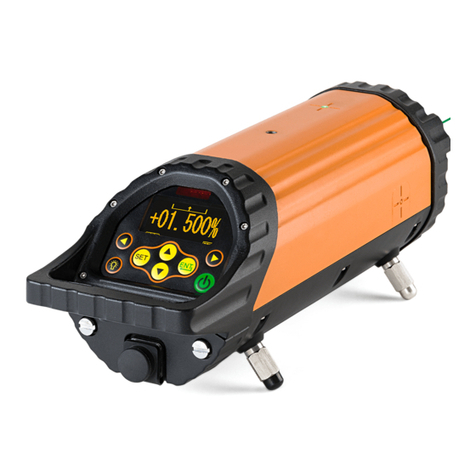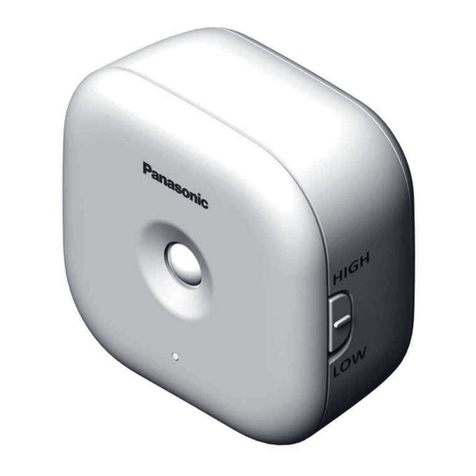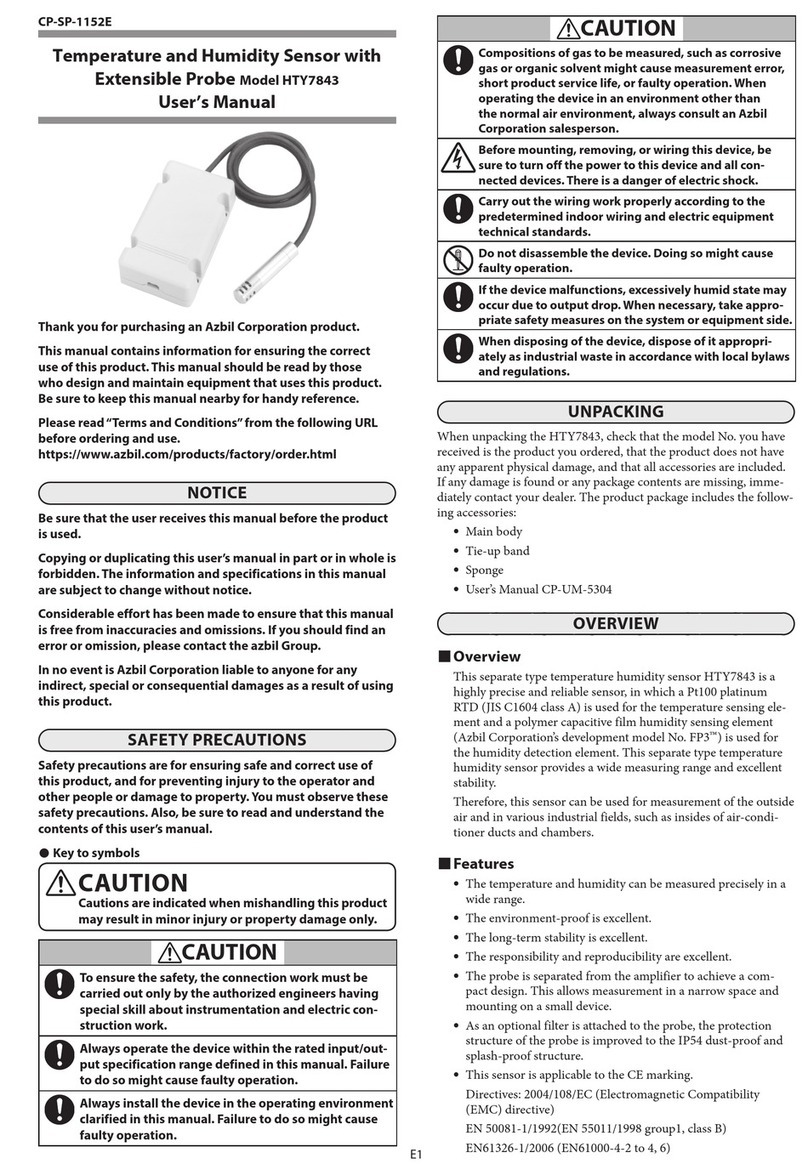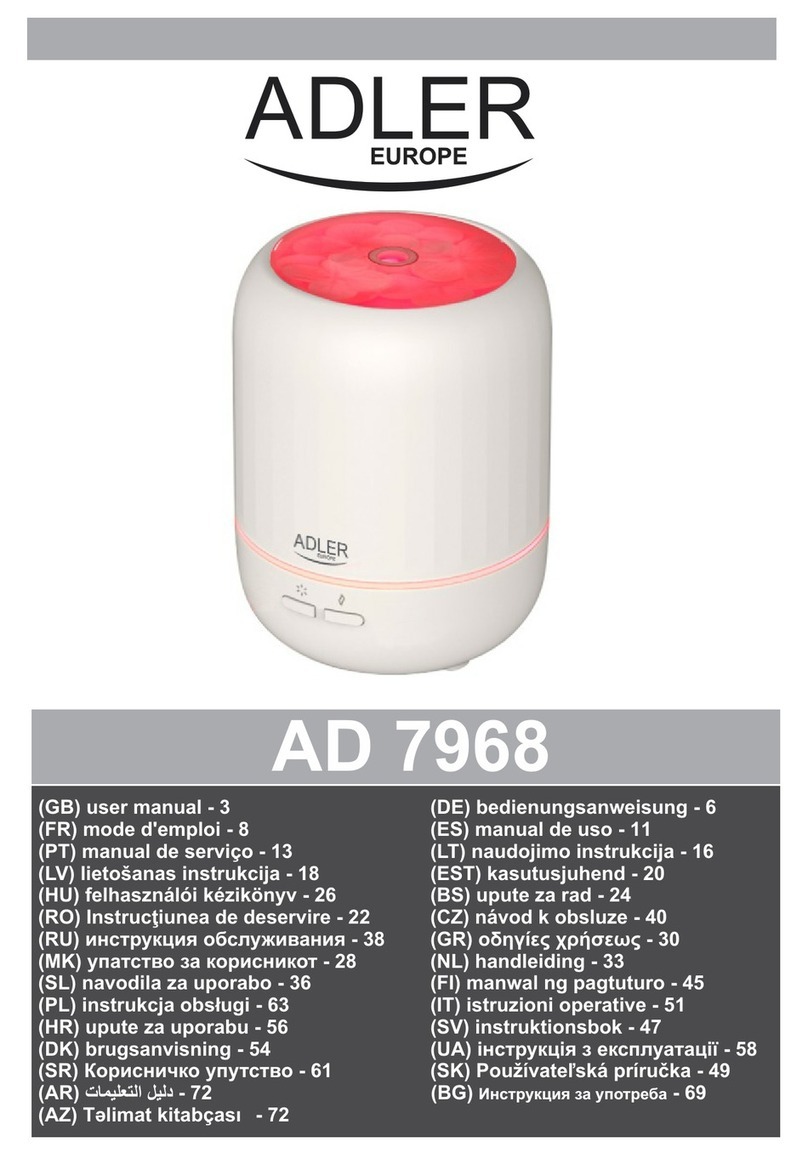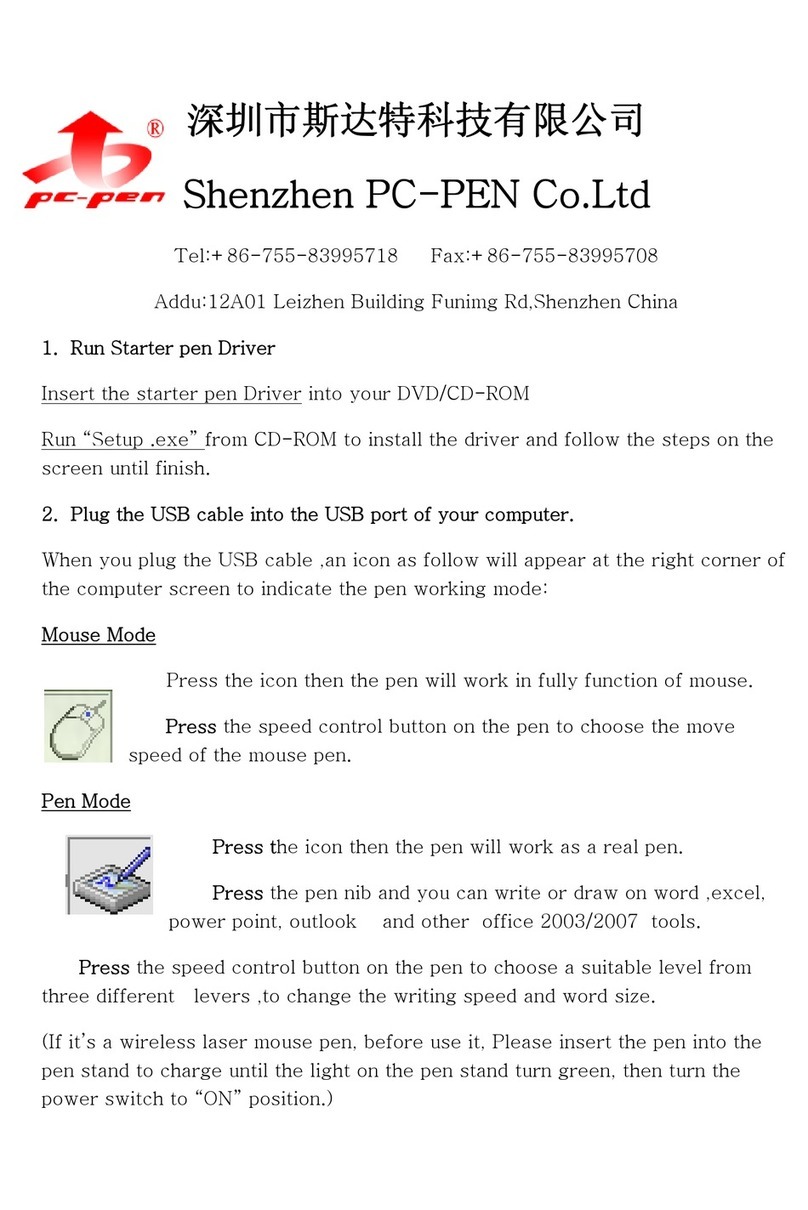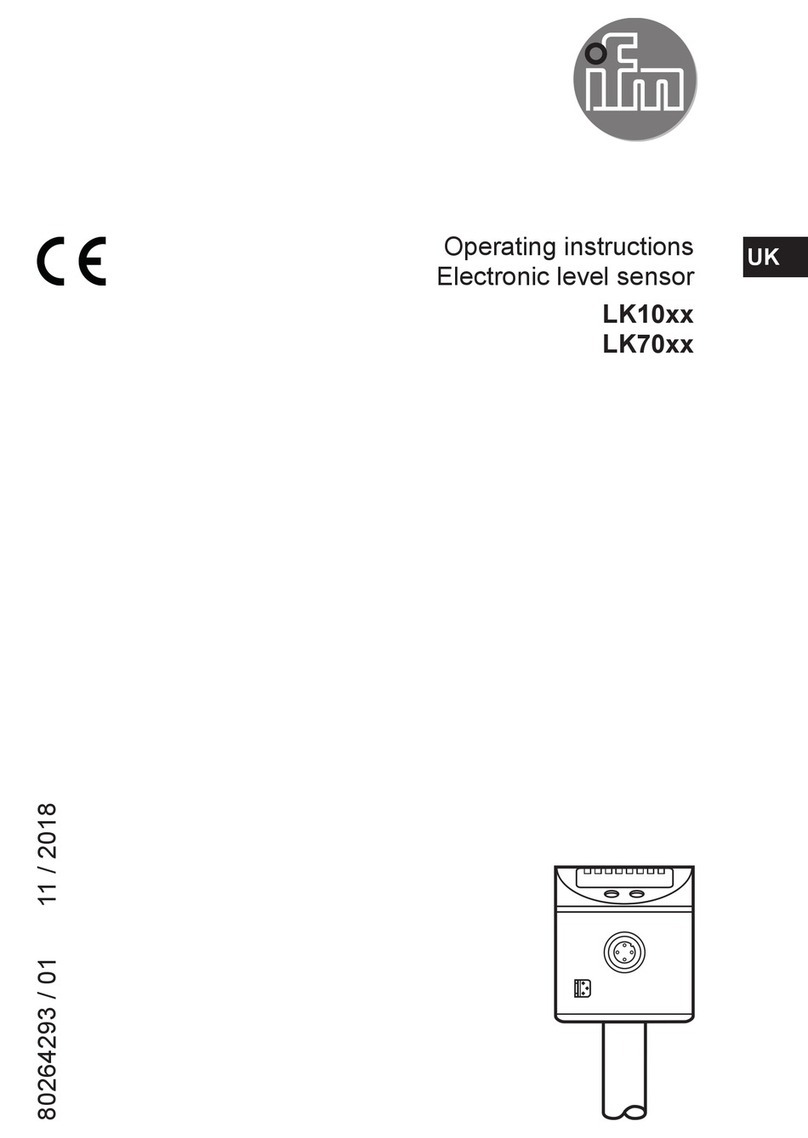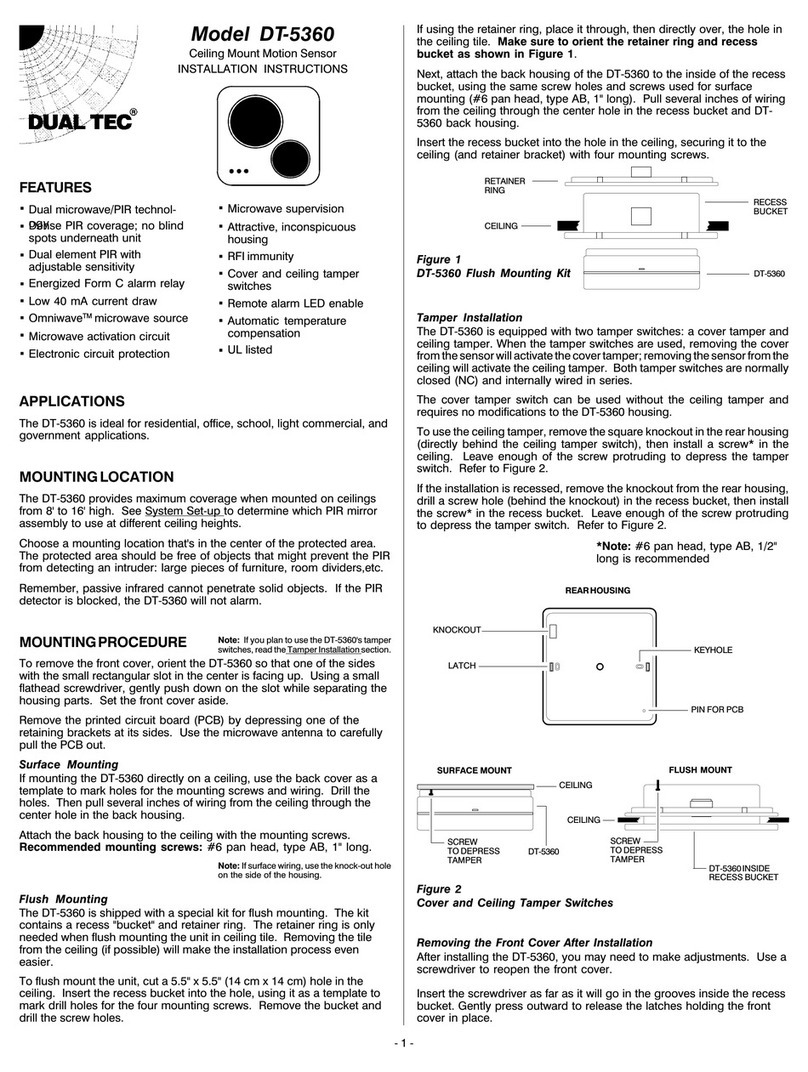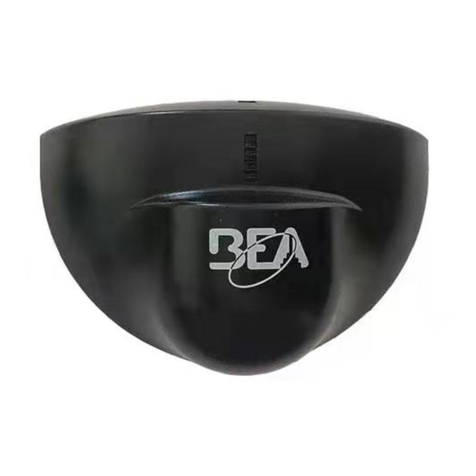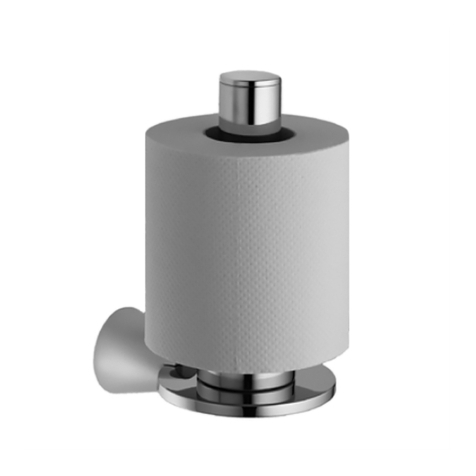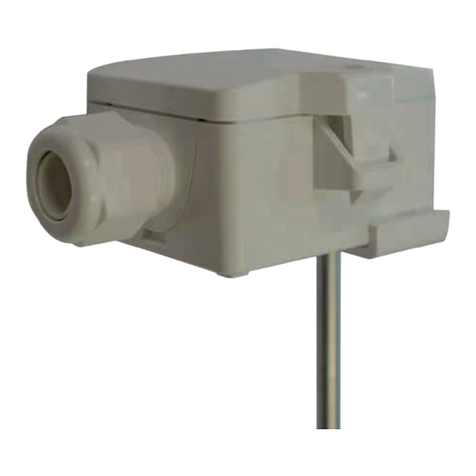GDS Corp GDS-48 User manual

GDSCorp.
1245ButlerRoadLeagueCity,TX77573
409‐927‐2980409‐927‐4180(Fax)www.gdscorp.com
Operation and Maintenance
Manual
GDS‐48RemoteBridgeSensorforCombustibleGases,VOCsandCO2

GDS-48 Remote Bridge Sensor Operation and Maintenance Manual, Revision 1.0
CAUTION: FOR SAFETY REASONS THIS EQUIPMENT MUST BE OPERATED AND
SERVICED BY QUALIFIED PERSONNEL ONLY. READ AND UNDERSTAND INSTRUCTION
MANUAL COMPLETELY BEFORE OPERATING OR SERVICING.
ATTENTION: POUR DES RAISONS DE SÉCURITÉ, CET ÉQUIPEMENT DOIT ÊTRE UTILISÉ,
ENTRETENU ET RÉPARÉ UNIQUEMENT PAR UN PERSONNEL QUALIFIÉ. ÉTUDIER LE
MANUE D’INSTRUCTIONS EN ENTIER AVANT D’UTILISER, D’ENTRETENIR OU DE
RÉPARER L’ÉQUIPEMENT.
REVISIONHISTORY
Revision1.05/1/13 InitialRelease
Copyright©2013GDSCorp.AllRightsReserved
P/N1200‐0853‐01

GDS-48 Remote Bridge Sensor Operation and Maintenance Manual, Revision 1.0
CONTENTS
1SAFETYINFORMATION.............................................................................................................................................4
2GENERALINFORMATION..........................................................................................................................................5
CATALYTICBEADSENSORS................................................................................................................................................5
INFRAREDSENSORS.........................................................................................................................................................5
PIDSENSORS.................................................................................................................................................................5
3SPECIFICATIONS........................................................................................................................................................6
4INSTALLATION..........................................................................................................................................................8
CHOOSINGALOCATION...................................................................................................................................................8
ELECTRICALCONNECTIONS...............................................................................................................................................9
5CALIBRATION..........................................................................................................................................................11
CALIBRATIONOVERVIEW................................................................................................................................................11
GENERALIZEDCALIBRATIONPROCEDURE...........................................................................................................................11
6OPERATIONANDMAINTENANCE............................................................................................................................13
SENSORREPLACEMENT..................................................................................................................................................13
7SPAREPARTS..........................................................................................................................................................15
GRAYENCLOSURE.........................................................................................................................................................15
YELLOWENCLOSURE.....................................................................................................................................................15
SENSORHEADACCESSORIES...........................................................................................................................................15
TableofFigures
Figure3‐1:RecommendedSensorTemperatureRangesandExcitation*....................................................................7
Figure3‐2:RecommendedSensorWarmupTimes.......................................................................................................7
Figure4‐1:GDS‐48GrayEnclosure................................................................................................................................8
Figure4‐2:GDS‐48WiringConnections(GrayEnclosure).............................................................................................9
Figure5‐1:ApplyingCalibrationGastoGDS‐48..........................................................................................................12
Figure6‐1:SensorReplacement..................................................................................................................................14

GDS-48 Remote Bridge Sensor Operation and Maintenance Manual, Revision 1.0
1SAFETYINFORMATION
Important–ReadBeforeInstallation
UsersshouldhaveadetailedunderstandingofGDS‐48operatingandmaintenanceinstructions.UsetheGDS‐48
onlyasspecifiedinthismanualordetectionofgasesandtheresultingprotectionprovidedmaybeimpaired.Read
thefollowingWARNINGSpriortouse.
WARNINGS
TheGDS‐48sensortransmitterdescribedinthismanualmustbeinstalled,operatedandmaintainedin
accordancewithinformationcontainedherein.Installationinanyhazardousareamustcomplywithall
applicablerestrictions,requirementsandguidelinesforsaidhazardousareas.Itistheendusercustomer’s
finaldecisiontoensurethattheGDS‐48issuitablefortheintendeduse.
TheGDS‐48isdesignedandconstructedtomeasurethelevelofcertaingasesinambientair.Accuracyin
atmospherescontainingsteamorinertgasescannotbeguaranteed.
Alwaysmountthesensorheadverticallywiththesensorheadfacingdown.
Donotpaintsensorassembly.
DonotoperatetheGDS‐48ifitsenclosureisdamagedorcrackedorhasmissingcomponents.Makesure
thecover,internalPCB’sandfieldwiringaresecurelyinplacebeforeapplyingpower.
DonotexposetheGDS‐48toelectricalshockorcontinuousseveremechanicalshock.ProtecttheGDS‐48
andrelatedsensorassembliesfromdrippingliquidsandhighpowersprays.
Calibratewithknowntargetgasatstart‐upandcheckonaregularschedule,atleastevery90days.More
frequentinspectionsareencouragedtospotproblemssuchasdirt,oil,paint,greaseorotherforeign
materialsonthesensorhead.
Periodicallytestforcorrectoperationofthesystem’salarmeventsbyexposingthemonitortoatargeted
gasconcentrationabovetheHighAlarmsetpoint.
Useonlyforapplicationsdescribedwithinthismanual.

GDS-48 Remote Bridge Sensor Operation and Maintenance Manual, Revision 1.0
2GENERALINFORMATION
TheGDS‐48RemoteBridgeSensorisdesignedtosupportremotesensorswithbridge‐styleoutputsignalsthatare
suitablefortransmissionoverlongdistances.TheGDS‐48isideallysuitedforinstallationwherereliabilityandcost
arecriticallyimportantandwherealocaldisplayisnotrequired.
Three‐wirebridge‐styleoutputcompatiblewithGDSCorpcontrollers.
CertifiedforuseinClassIDivision1,GroupsB,C&Dhazardousareas
Easily‐replaceablesensorelement
Faultindicationforsensorfailormissingsensor(atcontroller)
Constructedof316stainlesssteel
Reliablecatalyticbead,infraredorphotoionizationsensortechnology
CATALYTICBEADSENSORSarethemostcosteffectivesolutionforthedetectionofcombustiblegases.
Catalyticbeadsensorsarecomprisedoftwoindependent‘beads’thatarewrappedwithaspecialwirethatvaries
inresistancebasedonchangesintemperature.Onebeadiscoatedwithamaterial(“catalyst”)thatpromotesthe
burningofanycombustiblegasthatmaybepresent.Duringoperation,anexcitationvoltageappliedtothesensor
raisesthetemperatureofbothbeadstoapre‐specifiedvalue.Whengasispresent,thetemperatureofthebead
withthecatalystcoatingincreases.Thischangestheratioofresistancebetweenthetwobeadsandindicatesthe
presenceofgas.Tooperateproperly,catalyticbeadsensorsmustbeinstalledandbalancedforzerowhennogasis
present.
INFRAREDSENSORSuseinfraredlightsourcetodetecthydrocarbons.Carbon‐hydrogenbondsinmost
commonhydrocarbonmoleculesabsorbcertainfrequenciesofinfraredlight.Asaresult,whenanyhydrocarbon
gaspassesbetweentheinfraredsourceanddetector,thedetectoroutputdrops,indicatingthepresenceofgas.A
referencebeamthatisnotaffectedbyH‐Cbondsisusedtomonitorchangesinsourceintensityandeliminatefalse
alarms.GDSCorpSmartIRinfraredsensorscontainfullyintegratedsource,receiverandmicroprocessor‐based
circuitrytoperformthisfunctionandgenerateacatalytic‐beadstylebridgeoutput.
PIDSENSORSareappropriateforvolatileorganiccompoundssuchasbenzeneortoluene.Aphotoionization
detector(PID)sensorusesultravioletlighttobreakdowncomplexmoleculesanddetecttheionizedcomponents.

GDS-48 Remote Bridge Sensor Operation and Maintenance Manual, Revision 1.0
3SPECIFICATIONS
Model:GDSCorpRemoteBridgeSensorforCombustibleGasesandCarbonDioxide
PowerInput:Excitationvoltage,dependentonsensor
Display:None
Input:DirectconnectbridgesensorsforcombustibleandCO2gases.
Accuracy:+/‐5%offullscale(typical)
Calibration:Outputisfactoryadjustedbutisnotcalibrated.Receivingdevicemustprovidezero
andspan(two‐point)calibration.TheGDS‐48iscompatiblewithallGDSCorp
controllerswithbridge‐styleinputsthatprovidetwo‐pointcalibrationcapability.
Output:Millivoltbridge‐styleoutputs
ResponseTime:Determinedbysensortype andrange
Temperature:Seeindividualsensortemperaturespecifications
FaultIndication:Providedbycontrollerorreceiver
Housing:Junctionboxepoxy‐coatedaluminum,sensorhead316stainlesssteel.
Approvals: CSAClass1,Division1,GroupsB,CandDExplosionProofwithflamearrestor;
Warranty:Twoyearsonelectronics,oneyearonsensor

GDS-48 Remote Bridge Sensor Operation and Maintenance Manual, Revision 1.0
SensorRange Temperature ExcitationVoltage*
50Methane0‐100%LEL ‐20°Cto+50
°
C4.5VDC@80mA
51Propane0‐100%LEL ‐20°Cto+50
°
C4.5VDC@80mA
52Methane0‐100%v/v ‐20°Cto+50
°
C4.5VDC@80mA
53CarbonDioxideMultiple ‐20°Cto+50
°
C4.5VDC@80mA
57EthyleneOxide0‐100%LEL ‐20°Cto+50
°
C4.5VDC@80mA
61PID10.6eVLowrange ‐20°Cto+60
°
C3.3VDC@35mA
62PID10.6eVHighrange ‐20°Cto+60
°
C3.3VDC@35mA
63PID9.6eVLowrange ‐20°Cto+60
°
C3.3VDC@35mA
64PID10.0eVLowrange ‐20°Cto+60
°
C3.3VDC@35mA
65PID10.0eVHighrange ‐20°Cto+60
°
C3.3VDC@35mA
70CatalyticBead0‐100%LELCH4 ‐40°Cto+60
°
C2.0VDC@300mA
71CatalyticBead0‐100%LELother ‐40°Cto+60
°
C2.0VDC@300mA
Figure 3-1: Recommended Sensor Temperature Ranges and Excitation*
*Excitationvoltageisalwaysmeasuredatthesensorjunctionboxbetweenterminals“R”and“A”
TypeSensorRecommendedWarmupTimeComments
50‐57SmartIRInfrared1hourInternalmicroprocessorprovidesfault
signalandtempcompensation
61‐64PhotoionizationDetector8hourAllowstimeforcontaminantsto
‘burnoff’bulb
70‐71CatalyticBead
4hoursOninitialstartup–mayrequireless
timeifpowerhasbeenturnedofffor
shorttime
Figure 3-2: Recommended Sensor Warmup Times

GDS-48 Remote Bridge Sensor Operation and Maintenance Manual, Revision 1.0
4INSTALLATION
CHOOSINGALOCATION
Factorssuchasairmovement,gasdensity,emissionsourcesandenvironmentalvariablesaffectsensorlocation.
Airmovementbyfans,prevailingwindsandconvectionshouldbecarefullyevaluatedtodetermineifaleakismore
likelytoraisegaslevelsincertainareaswithinthefacility.Vapordensityofagasdeterminesifitwillriseorfallin
airwhentherearenosignificantcurrents.Lighterthanairgasesshouldhavethemonitorsmounted12–18inches
(30–45cm)abovethepotentialgasleakandheavierthanairgasesshouldbethisdistancebelow.Eventhough
theGDS‐48sensortransmitterisdesignedforruggedservice,itshouldbeprotectedfromenvironmentaldamage
fromwater,snow,shock,vibrationanddirt.
TheGDS‐48shouldalwaysbemountedwiththesensorheadopeningfacingdown.Ifnecessary,aSplashGuard
(p/n10‐0205)shouldbeattachedifthereisanychancethatwaterorliquidspraycouldenterthesensoropening
frombelow.Besuretoleavesufficientroom(~12”)belowthesensorheadtoalloweasyaccessforattachmentof
aCalibrationCupand/orremovalofthesensorheadcoverforsensorreplacement.
Figure 4-1: GDS-48 Remote Bridge Sensor
TB1
USER‐C‐AforCO MB US TI B L E, CO2orPIDSENSOR
USES‐R‐Cfo r OX YG EN orTOXICGASSENSOR
S—R—C
R—C—A
GrayEnclosureYellowEnclosure

GDS-48 Remote Bridge Sensor Operation and Maintenance Manual, Revision 1.0
ELECTRICALCONNECTIONS
TheGDS‐48isathree‐wirebridge‐typesensorthatrequiresexcitationvoltageandoutputsamillivolt‐levelsignal
totheremotecontrollerorreceiver.Incorrectwiringcanresultinsensordamageorsensorfailure.
Figure 4-2: GDS-48 Wiring Connections (Gray Enclosure)
Figure 4-3: GDS-48 Wiring Connections (Yellow Enclosure)
TB1
USER‐C‐AforCO MB US T I B L E, CO2orPIDSENSOR
USES‐R‐Cfo rOX Y GEN orTOXIC GASSEN ‐SOR
S—R—C
R—C—A
Three‐wireconnection
toremotereceiveror
controller
Three‐wireconnection
toremotereceiveror
controller
“R”
“C”
“A”
“R”
“C”
“A”

GDS-48 Remote Bridge Sensor Operation and Maintenance Manual, Revision 1.0
Shieldedcableisalwaysrecommended.Wiringshouldbeinstalledinmetalconduitwithnoothercablinginthe
sameconduit.WhenpowerisinitiallyappliedtotheGDS‐48theoutputmaymomentarilyindicateatemporaryoff‐
scalelow(FAULT)oroff‐scalehigh(OVERRANGE)valuebeforesettlingdown.AllGDSCorpcontrollersprovidea
‘warmup’intervalduringwhichthesensorinputisignored.Thiskeepsthecontrollerfromindicatinganalarmdue
tosensorwarm‐upcharacteristics.
Totalwarm‐uptimeisdependentonthetypeofsensorandrangeselected.GDSCorprecommendsafourtoeight
hourintervalbetweeninitialpower‐onandfirstcalibration.Ifthesensorhasbeenpoweredup,andhasonlybeen
offlineforafewhours,thewarm‐uptimewillbeshorter.

GDS-48 Remote Bridge Sensor Operation and Maintenance Manual, Revision 1.0
5CALIBRATION
CALIBRATIONOVERVIEW
TheGDS‐48doesnothavethecapabilitytoperformzeroandspancalibration.Finalzeroandspancalibrationmust
beperformedbythecontrollerorreceivingdevice.
FollowtheseGDS‐48calibrationguidelines:
Calibrationaccuracyisonlyasgoodasthecalibrationgasaccuracy.GDSCorpcalibrationgasesare
traceabletoNIST(NationalInstituteofStandardsandTechnology).
Neverusecalibrationgasthathaspasseditsexpirationdate.
AlwaysuseaGDSCorpcalibrationcupthatcompletelysurroundsthesensorhead.
BesuretouseZEROAIR,amixtureof21%oxygenand79%nitrogen,asazeroreferenceunlessyouare
certainthatnotargetgasexistsinthearea.Ambientgasmayresultinan‘elevatedzero’conditionthat
willcauseaFAULTtooccuroncetheambientgasisnolongerpresent.
GDSCorprecommendsusingaspangasthatisbetween25%and75%offullscale.GDSCorpdoesnot
recommendusingfullscaleasthespansetpoint.
Alwayscalibrateanewsensorbeforedependingonthedeviceforpersonnelorequipmentsafety
Calibrateonaregularschedule.GDSCorprecommendsafullcalibrationevery3months,withperiodic
‘bumptests’onamorefrequentbasistoensurethatthesensorhasnotbeenaffectedbytemperature
extremesorthepresenceofincompatiblegases.
Ingeneral,calibrationinvolvesapplyingazeroreferencegasandtellingthereceivingdevicetoacceptthatoutput
as‘zero’,followedbytheapplicationofaspanreferencegasandthentellingthereceivingdevicetoacceptthe
newoutputas‘span’oncetheoutputhasstabilized.Thisisgenerallyperformedbytwopersons,oneatthesensor
transmitterandoneatthereceivingdevice.Actualprocedures,timeintervalsandtechniquesforindicatingzero
andspanvaluesdependonthespecificreceivingdevice.AllGDSCorpdisplayandalarmcontrollersprovidethe
necessarylocalcalibrationcapability.
GENERALIZEDCALIBRATIONPROCEDURE
Beforebeginningcalibration,makesureyouhavethefollowingitems:Acylinderofcalibrationgas,fixedflow
regulatorandanappropriatecalibrationcupconnectedtotheregulatorviaalengthofflexibletubing.Ifnecessary,
acylinderof‘zeroair’maybenecessaryiftheabsenceoftargetgascannotbeconfirmed.GDSCorprecommends
aflowrateof0.5liters/minute.
InthecaseofPIDsensors,itmaybedesiredtosubstituteasurrogategasforthetargetgas,especiallyifthetarget
gasisdangerousorunavailableinacalibrationgascylinder.Formoreinformationonsurrogategasesandrelative

GDS-48 Remote Bridge Sensor Operation and Maintenance Manual, Revision 1.0
responsefactorsforcommonvolatileorganiccompounds,contactGDSCorpforalistofavailablegasesand
responsefactors.
Theactualstepsinvolvedincalibrationvarydependingonthereceivingdevice,butcanbegeneralizedasfollows:
1. SelecttheappropriatechannelonthecontrollerorreceiverandenableCalibrationMode.Thisshould
disablealarmsduringthecalibrationprocess.Makesurethatthecontroller’sCalSpanvaluematchesthe
cylinderofcalibrationgas.
2. ApplyzeroairtothesensorasshowninFig.6‐1orconfirmtheabsenceofanytargetgas.
3. Atthecontrollerorreceiver,pressthe“SetZero”buttontoconfirmthatthecurrentreadingis‘zero’.
4. ApplyspangastothesensorasshowninFig6‐1.
5. Atthecontrollerorreceiver,monitortheoutputuntilitstabilizes.Whenstable,pressthe“SetSpan”
buttontoconfirmthatthecurrentreadingcorrespondstotheSpanvalue.
6. Turnofftheregulatorandremotethecalibrationcupfromthesensorhead.
7. Atthecontrollerorreceiver,exitCalModeandresumenormaloperation.
Figure 5-1: Applying Calibration Gas to GDS-48
CylinderofCalibrationGas
FixedFlowRegulator
CalibrationCup

GDS-48 Remote Bridge Sensor Operation and Maintenance Manual, Revision 1.0
6OPERATIONANDMAINTENANCE
Inthenormaloperatingmode,themillivolt‐leveloutputcorrespondstothedetectedgasconcentration.Inthe
eventofasignificantgasrelease,theGDS‐48willindicateanoverrangeconditionifthesensor’soutputcontinues
toincreasebeyondthefullscalevalue.Intheeventthatthesensoroutputdropsbelowzeroduetointerference
gasesorsensorfailure,theoutputwilldroptozero,indicatingaFAULTconditiontotheremotereceiveror
controller.Ifthesensorisremoved,theoutputwillalsodroptozero.
TheGDS‐48shouldbecheckedregularlyfordamage,wateringressorflamearrestorcloggingduetoexcessivedust
ordirt.Iftheflamearrestorhasbecomecontaminatedbydust,dirtormoisture,removethesensorheadcover
(afterfirstmakingsuretodeclassifythearea)andcarefullycleanwithcompressedair.Useofsolventis
discouragedasremnantsofthesolventmaterialmayaffectthesensor.Therearenouser‐serviceablecomponents
andmaintenanceislimitedtocleaningand/orsensorreplacement.
SomeGDSCorpcontrollersandgasdetectorsmonitor‘sensorlife’bycalculatingavaluebetween0and100%
basedonthecurrentresponsetocalibrationgasascomparedtotheinitialresponsewhenthesensorwasfirst
installed.Toensurethatthecalculationsareaccurate,pleasemakecertaintofollowthe‘newsensor’installation
instructionsintheappropriatedevicemanual.
SENSORREPLACEMENT
IfasensorshowsFAULT,doesnotrespondtogasorcannolongerbecalibrated,itshouldbereplaced.GDS‐48
sensortransmittersuseGDSCorptype10‐95XXsensors,wheretheXXisthegastypeshowninSection3.The
rangevalueshouldalsobespecifiedwhenorderingreplacementsensors.Forexample,areplacementSmartIR
infraredforcombustiblegas,0‐100%LELwouldbe“10‐9550‐R0100”.
Toreplaceasensor,reviewFig.6‐1andfollowthesesteps:
1. DeclassifytheareaorremovepowertotheGDS‐48.
2. Unscrewthesensorheadcover.Ifunabletoopenthecoverbyhand,useaSensorHeadReplacement
Tool(p/n10‐0187).
3. Removetheoldsensorbypullingstraightdown.
NOTE:PULLSTRAIGHTDOWN.DONOTTRYTOUNSCREWTHESENSOR.
4. Carefullyinstallthereplacementsensorbyaligningthearrowonthesensorwiththearrowengravedon
thesensorhead.Pushstraightupuntilthesensorconnectorseatsfirmlyintothesensorconnector.
5. ReinstallthesensorheadcoverbyCAREFULLYscrewingthecoverontothesensorhead.
NOTE:IFTHESENSORFALLSOUTOFTHESENSORHEADDURINGTHISSTEP,ITCANBEDAMAGED.USE

GDS-48 Remote Bridge Sensor Operation and Maintenance Manual, Revision 1.0
CAUTIONWHENREINSTALLINGTHESENSORHEADCOVER.
Figure 6-1: Sensor Replacement

GDS-48 Remote Bridge Sensor Operation and Maintenance Manual, Revision 1.0
7SPAREPARTS
GRAYENCLOSURE
YELLOWENCLOSURE
SENSORHEADACCESSORIES
3.5”
3.5”
8.0”
5.5”
Enclosure+SensorHead(Nosensor):
20‐0126Fullassemblylesssensor(gray)
Enclosure/JunctionBoxOnly:
20‐0099Grayjunctionboxenclosurew/PCB
SensorHead Only:
10‐0247Remotebridge‐stylesensor(Type1‐4)
Note:Doesnotincludesensor
Enclosure+SensorHead(Nosensor):
20‐0153Fullassemblylesssensor(yellow)
SensorHead:
10‐0247Toxic(Type1‐4)
Note:Doesnotincludesensor
Sensor:
10‐95xxGDSCorpbridgesensor
Sensor:
10‐95xxGDSCorpbridgesensor

GDS-48 Remote Bridge Sensor Operation and Maintenance Manual, Revision 1.0
SplashGuardFlowCell
SensorHeadSplashGuard
10‐0198SplashGuard(Fitsallsensorheads)
SensorHeadFlowCell
10‐0205FlowCell(1/8”NPTcompressionfittings)
20‐0205SOther(specify)

GDS-48 Remote Bridge Sensor Operation and Maintenance Manual, Revision 1.0
8DRAWINGSANDDIMENSIONS
Figure 8-1: GDS-48 Yellow Enclosure
5.0”
7.75”

GDS-48 Remote Bridge Sensor Operation and Maintenance Manual, Revision 1.0
Figure 8-2: GDS-48 (Gray Enclosure)
3.5”
3.5”
5.5”
8.0”
Table of contents

